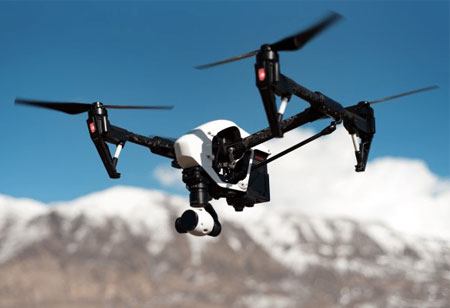THANK YOU FOR SUBSCRIBING
Be first to read the latest tech news, Industry Leader's Insights, and CIO interviews of medium and large enterprises exclusively from Education Technology Insights
Use of Drone Technology in Classroom
The use of drone technology in the instruction can give learning a different meaning altogether, almost akin to viewing the world with a new pair of eyes. Drones can be used for various purposes like the maintenance departments uses a drone to check

By
Education Technology Insights | Tuesday, July 16, 2019
Stay ahead of the industry with exclusive feature stories on the top companies, expert insights and the latest news delivered straight to your inbox. Subscribe today.
Instilling drone technology in instruction for students will help in more engagement and better understanding.
FREMONT, CA: The use of drone technology in the instruction can give learning a different meaning altogether, almost akin to viewing the world with a new pair of eyes. Drones can be used for various purposes like the maintenance departments uses a drone to check structures while in the transportation industry they can be used to capture the aerial footage of traffic. In schools, drone technology is employed for security checks and in classrooms to teach a specific concept, storytelling, and document projects.
Drones can be further used in:
Classroom Instruction: Educators can make use of drones in their teaching to make science and math relevant for students and to make their point. Furthermore, instilling drone technology can also keep pupils engaged and keep instruction fresh in their minds.
Videography: A footage taken by a drone can help students ignite their imagination to write assignments, for example, take drone footage and have learners describe what they see. The idea will constitute a useful teaching strategy.
Flight Theory Makes Way to Science and Math: Calculating the drone flight period and the distance traveled is one lesson that educators can create for their pupils.
Arts and Sports: The tool can help students improve and perform better.
What Kind of Drones are Better at Schools?
Indoor and outdoor drones are the two categories of drones, which are programmable. Regardless of the type of drone selected, a few safety features are to be considered:
• Indoor Drones: It is necessary for indoor drones to have propeller guards to prevent drones from destructive falls.
• Outdoor Drones: It is better to look for instruments with programmable fail-safes so that in case of any failure, the device responds in a way that causes no or minimal harm to the equipment and the environment.
It is essential to remember that drones work no different than most of the devices in the lab, and so, is essential for students to learn drone safety before the first flight.
Know Flight Rules and Regulations!
It is important to keep a few tips in mind before launching a drone project
• Avoid flying drone during windy and stormy weather.
• Inform the law enforcement before flying drones at school so that they can help in class projects by restricting other operators from causing interruptions with the videography.
• Fly drones within the line of sight.
• Adhere to weight and speed guidelines.
• Do not fly the drone over people.







